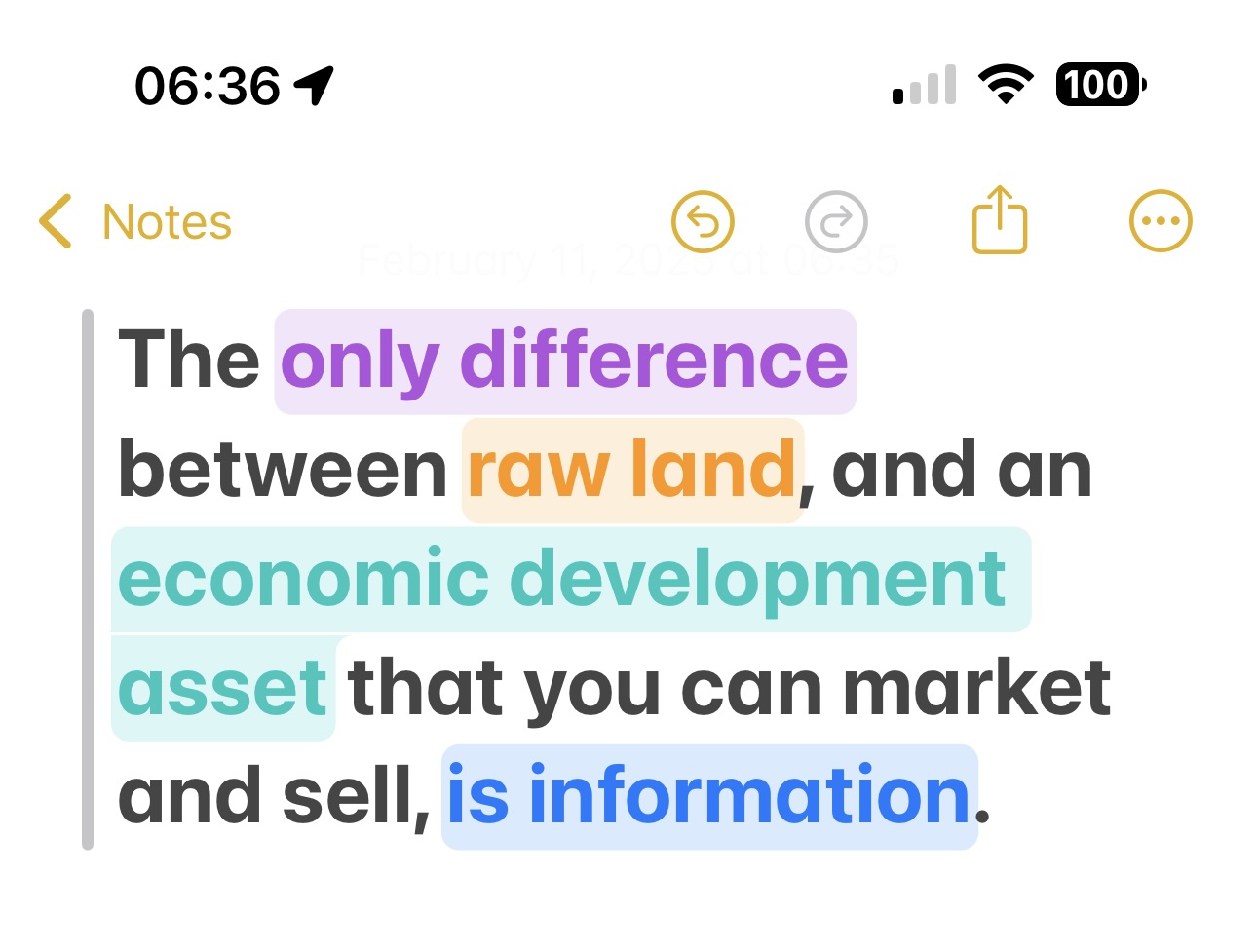
Raw land is just dirt until you know its story. Think of it like having a blank canvas. All the potential it has is hidden until you add the details. The only difference between raw land and a marketable economic development asset is information.
Imagine you’re looking at a field. At first glance, it's nothing more than soil and grass. Now, imagine you know every detail about it: the underground electrical conduits, natural gas lines, water pipes, and wastewater systems already mapped out. You know its potential because you’ve seen the site details—what improvements have been made, what the land features are, and yes, even how it might be expanded.
Every good plan has its fundamentals. Zoning tells you the current rules, and planning documents lay out the future possibilities. Is it zoned for industrial, commercial, or residential use? That tiny piece of paper can change the future value of the land overnight by showing what’s allowed. And then there’s incentives and abatements: the small print that can offer tax breaks or other benefits to those who invest wisely.
Accessibility is another crucial advantage of information. How close are the roads, highways, and even airports? Does freight rail service or intermodal facilities raise the potential for trade and growth? Knowing that a site is near ports, waterways, or pipelines can tell you everything you need to know about its logistical edge.
Environmental and permitting details can be deal-breakers. If the site has environmental issues, or if local permitting is a long and complicated process, that information becomes as valuable as gold. Easements might tell you what parts of the land are already dedicated to something else. Each piece of information—whether it's about telecommunications service or electrical access—adds its own layer to the story of the land.
In short, raw land is simply potential until you detail its infrastructure, zoning, access points, and environmental considerations. When you have all this information, the land is no longer just a patch of dirt. It becomes a canvas for growth—a well-prepared foundation for economic opportunity.
That’s the beauty of it. Information transforms the unknown into the known and the unmarketable into an asset. All you need is the right details, and that piece of land turns into a story ready to be told, built upon, and sold.